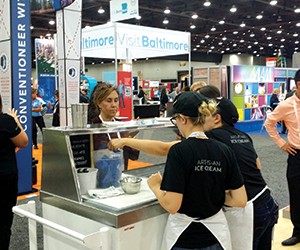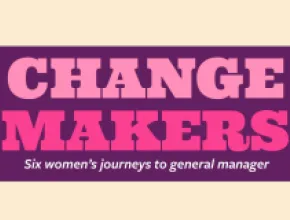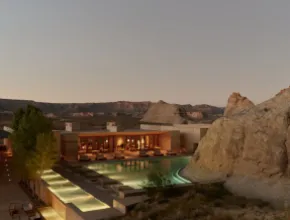For anyone who’s had the pleasure of attending the annual show hosted by the Center for Association Leadership (aka ASAE), it’s an event where the high expectations are exceeded only by the results.
And this year’s show in Detroit, held Aug. 8-11 at the Cobo Center, was certainly no exception, with about 5,300 attendees taking in the robust educational programming, strolling the event’s sprawling marketplace and enjoying some tantalizing off-site dining events.
Meetings Focus picked the brains of two key organizers helping plan the event for some of their secrets to success. Here’s some of the insider takeaways for other planners to ponder when putting their own big shows together.
Ally Jenkins, Manager, Conferences
Now in her second year running the annual show, Jenkins says the decision to host the 2015 show in Detroit was decided by her organization’s leadership years in advance, but it wasn’t a difficult one.
“They’ve been a strategic partner, and really helped support us in the past, so it was really a no-brainer,” Jenkins explains.
A key focus for Jenkins and her team in 2015 was showcasing the local and regional flavors of Detroit and its home state of Michigan in various ways throughout the show, from cuisine to entertainment.
“We really try now to work with local talent, work with the CVB, and really try to be true to local artists and offerings,” she says, an effort that drills down even into the small details, such as working with catering to make sure local Michigan breads and other fare are showcased at dining functions.
“It’s always a challenge,” Jenkins adds, referring to the quest of making thousands of attendees happy at ASAE’s various dining functions. “The big trends have been local and sustainable, and we’ve been working with Centerplate the past few years to focus on that. It’s hard to please everyone of course, but we make sure there are plenty of options, gluten-free choices, et cetera, and we work closely with attendees ahead of time to determine any dietary restrictions.”
Another way that Jenkins and ASAE emphasized a significant sense of place was via off-site affairs held at iconic local venues with their own singular settings. To that end, a three-tiered effort included opening and closing parties at the Henry Ford Museum and Hart Plaza, respectively, and the wildly popular fundraising gala dubbed The Classic that took place at the historic Fox Theatre.
As for advice she’d give to other planners hosting a large city-wide gathering, Jenkins says that in addition to being organized, flexible and having a sense of humor, self-confidence in your own plans is also crucial.
“You have to let it go at a certain point and have faith that your hard work will pay off,” she advises. “Have fun! It’s stressful but it’s also great to see what you’ve achieved at the end.”
Allison Wachter, CEM, Director, Exhibitions & Registration
“We had the honor being named one of Trade Show Executive’s 50 Fastest-Growing Shows in 2014 for increases in net square feet, number of exhibiting companies and attendance growth,” says Allison Wachter in reference to last year’s show in Nashville. “Detroit is shaping up nicely as well and I think we’ll have another banner year.” (See sidebar for updated 2015 statistics and attendance.)
She says one challenge is “keeping it fresh, exciting and new. We always want to exceed people’s expectations and have them walking away thinking wow, that was awesome! We also want to give them ideas that they can apply to their own meetings, events and expositions.”
One key tech tool that Wachter hails for the overall show is a new platform that actually came from the organization’s thought-leaders.
“Not specific to the tradeshow floor, but we will be using a tool for the second time this year at the Annual Meeting that was specifically created out of an idea from ASAE’s Meeting & Expositions Section Council,” Wachter explains. “It’s called ExperienceGuru. It allows us to get immediate feedback about what’s going on at the show from our attendees and fix any issues that may arise in real time. For example, we might ask people how things are going on the tradeshow floor. They might respond saying they are looking for a certain vendor and can’t find them. This tool allows us to respond in real time with like exhibitors or that exact exhibitor’s booth number. It’s nice to be able to solve problems and enhance people’s experiences while we’re still on-site. Currently 23 percent of our attendees are signed up to participate in the program this year.”
In general, she stresses one element in particular teams must focus on for a successful large show and show floor.
“Communication is king! A few years back we realized that our pre-show communication wasn’t always being shared with the people who would actually be working the booth on-site,” Wachter says. “To remedy this, we started sending an e-mail about one week prior to the show not only to the booth organizer, but also to all registered booth staff. This has helped those who will be on-site with us tremendously.”






